Digital Completions in Plant Modifications and Upgrades
Unlike greenfield or any new build construction projects, plant modifications and upgrades present a unique set of challenges. Work is carried out...
6 min read
 Lisa De Vellis, PE
:
Jun 5, 2024 2:32:24 PM
Lisa De Vellis, PE
:
Jun 5, 2024 2:32:24 PM
Recently, MODS hosted our inaugural webinar where we focused on Advanced Work Packaging (AWP), featuring insights from our in-house experts: Vice President of Enterprise Architecture Hayashi Mikitaka (Mick), Americas Sales & Project Coordinator Andrew Lillico and Chief Product Officer Scott Smith.
The session illuminated the transformative potential of AWP in enhancing construction productivity, including for brownfield and other smaller projects. It was a wonderful turnout, demonstrating the continued need to make industrial construction and maintenance projects run more efficiently. Here are the key highlights and takeaways from this engaging event.
Advanced Work Packaging, as defined by the Construction Industry Institute (CII), is a planned executable process beginning from planning and going through installation. The overall process flow of all detailed work packages (construction, engineering, installation work packages), AWP is a framework for progressing construction, predicated on the existence of a construction execution plan.
Contrary to common perception, AWP is not limited to large-scale capital projects; it is equally applicable to smaller and more complex projects, such as those in brownfield environments. AWP not only can but should be applied to non-capital projects such as brownfield.
One of the core reasons for adopting AWP is the significant decline in construction productivity over the past five decades—by an alarming 40 percent. This decline stands in stark contrast to the advancements seen in other industries like manufacturing. The underlying issue is the prevalence of non-value-added activities, including rework and preparation tasks. A mere 10 percent of construction activities actually add value.

Implementing AWP addresses these inefficiencies by improving communication, visibility, sequencing and constructability during the design phase, as well as more granular tracking of work package progress and improved leverage of digital design models for procurement, construction and startup leading to substantial productivity gains. So, while AWP methodology focuses on construction, it positively impacts upstream engineering and procurement processes as well.
Preparation for AWP starts with breaking down projects into manageable levels, which is traditionally done to only three levels. But AWP takes it further, breaking down projects into five levels, with each level refining the detail more and more. The further down the chain of decomposition that a project progresses, the data volume increases exponentially. So, with AWP, there’s a lot more data collected relative to traditional projects. This requires proper data management, which can be accomplished with tools such as digital work packs.
The next step is to focus on input constraints, which need to be controlled before starting any workflows. AWP’s detailed decomposition enables a more refined constraint management via the collection of extensive data. With digital work package tools, the beauty of AWP is ensuring constraint-free working. By focusing on the data elements (i.e. the input constraints) and ensuring they are cleared before proceeding, AWP promotes a constraint-free working environment.
The webinar highlighted a step-by-step approach to implementing AWP, aligning project phases with AWP phases. Importantly, AWP provides a ton of flexibility upstream of project works. It is a forgiving approach that allows plenty of opportunity for recovery from deviations to get back on track and ensure smooth, constraint-free execution during the construction phase.
From this perspective, AWP is arguably an even better fit for brownfield projects that start with a smaller proof of concept but that can have a myriad of additional complexities in the planning, engineering and procurement phases.

AWP is all about collecting as much information as possible. As such, data volume explodes as projects advance. This demands not only digitalization of workflows and processes but also relies on robust data management.
The most important data elements are tag classes (such as pumps or compressors) and tags. Tags must be linked to:
Once this confluence of linked project data exists, you can use AWP data standards and the DAMA-DMBoK to control data quality and conduct proper data management.

Implementing AWP correctly has been shown to increase construction productivity by 8 percent, which goes straight into your pocket as additional profit. This productivity increase comes from a reduction in non-value-added resource use, such as unnecessary person-hours and administration.
This 8 percent increase in construction productivity is actually a low-end estimate when implementing AWP, as this refers to the non-tool time, which varies from company to company. Also, it refers exclusively to construction productivity. Overall productivity may increase by around 22 percent with a 10 percent reduction in Total Installed Cost.

Beyond these figures, AWP enables earlier constructability reviews, granular progress tracking, proactive guidance for engineering and procurement as well as improved alignment between engineering, procurement and construction. Further, AWP facilitates a shared understanding between stakeholders through improved visibility and clarity of priorities. This all leads to improved design 2D/3D visualization models as well as Enterprise standardization of project execution.
With AWP, you plan early with the end in mind. AWP will bring stable benefits by producing no wait, no waste and no rework, which makes it the ideal framework for implementing Lean construction principles. And, counter to popular belief, AWP is even more well-suited to brownfield projects. But, for this to be the case, you must harness the AWP data with digital tools.
The above conversation stoked some thoughtful discussion after the webinar around practical AWP implementation. Here, we recap some of the highlights from the Q&A.
Q: Is there a return on investment using AWP in brownfield settings?
A: Absolutely. It doesn’t matter whether you’re applying AWP to large-scale new-builds or refurbs, to greenfield or brownfield, constraint-free work packages enhance productivity and eliminate non-value-added activities.
AWP methods and tools can ensure that resources are ready to go as and when. So, no matter what the project type or size, AWP improves construction efficiencies and improves the project’s bottom line.
Q: Does AWP require a lot of resources?
A: Mick gave a well-suited metaphor to answer this in simple terms. Here it goes: Suppose you have a soccer team. You’d have 11 people on the pitch, with more people on the bench. But, it remains that you only have 11 people in the game. Even in the most efficiently played game, you still need 11 people on the field.
AWP does require upfront training, yes. But, ultimately, there’s no need for additional people. So, with AWP, you can get rid of the backup players waiting on the bench, consuming time, money and other resources in a non-value-added way. It’d be possible, or maybe even likely, that updating your business process to accommodate AWP might require additional people. But, this wouldn’t be in equal measure to additional personnel required at baseline before AWP.
So: with AWP, following the first 6-month to 1-year investment, you need fewer people to implement projects versus without. Fewer people means fewer resources. After a bit of activation energy upfont, AWP projects will consume far fewer resources.
Q: We understand that Construction Work Packs (CWPs) can be broken down by area, but what is the best strategy to create CWPs like for the installation of cable trays, for example?
A: AWP provides several ways to solve this very issue. You can hierarchically define construction work areas. For example, steel structures or a type of equipment can be placed in one area, but moving up one level higher you can cover more area. So, cables or pipes can go through one work area, but you can define it as well into a higher level. That’s one solution.
The other solution is that you don’t necessarily have to break work down into physical areas. Instead, you can break your work into systems, such as utility lines, for example. This enables you to define the work for the planned system. Or, even better, you can even mix these solutions together. Take the higher construction work area hierarchy and link it to the system, then you can control the piping/cabling cross areas.
Q: How do AWP tools help create a Path of Construction (PoC)?
A: Following AWP, you can, firstly, break the construction plan into areas, and then break it down further into functionality. Then, we group tags. This enables an understanding of which parts of the plan are interconnected so that a PoC can be developed.
These tags are then grouped into construction work packages. Then, we can start to assemble installation work packages and build the PoC as well as look at critical areas, assigning predecessor and successor activities. Finally, bringing in the schedule, we can integrate engineering and procurement, focusing on the areas of work on which to deliver the project.
Q: How quickly can AWP be set up for brownfield projects?
A: This depends on where you are with your business processes and data maturity. MODS have the tools at the ready. If the data is there, we can get your AWP brownfield project up and running very quickly, in around 1-to-2 weeks.
If your business processes need to adapt, or data cleansing is required, that will take longer. If that’s the case, digital consultancy services can accelerate your progress. Ultimately, AWP deployment comes down to where you are and your willingness to change.
AWP revolutionizes construction productivity beyond capital projects, delivering significant benefits for projects of all sizes and complexities. Through project decomposition and robust data management, “finish to start” project planning and constraint-free construction execution flow freely, unlocking greater efficiency and profitability.

Unlike greenfield or any new build construction projects, plant modifications and upgrades present a unique set of challenges. Work is carried out...

Turnarounds and shutdowns are among the most critical—and stressful—phases in the management and operation of industrial assets. These planned...
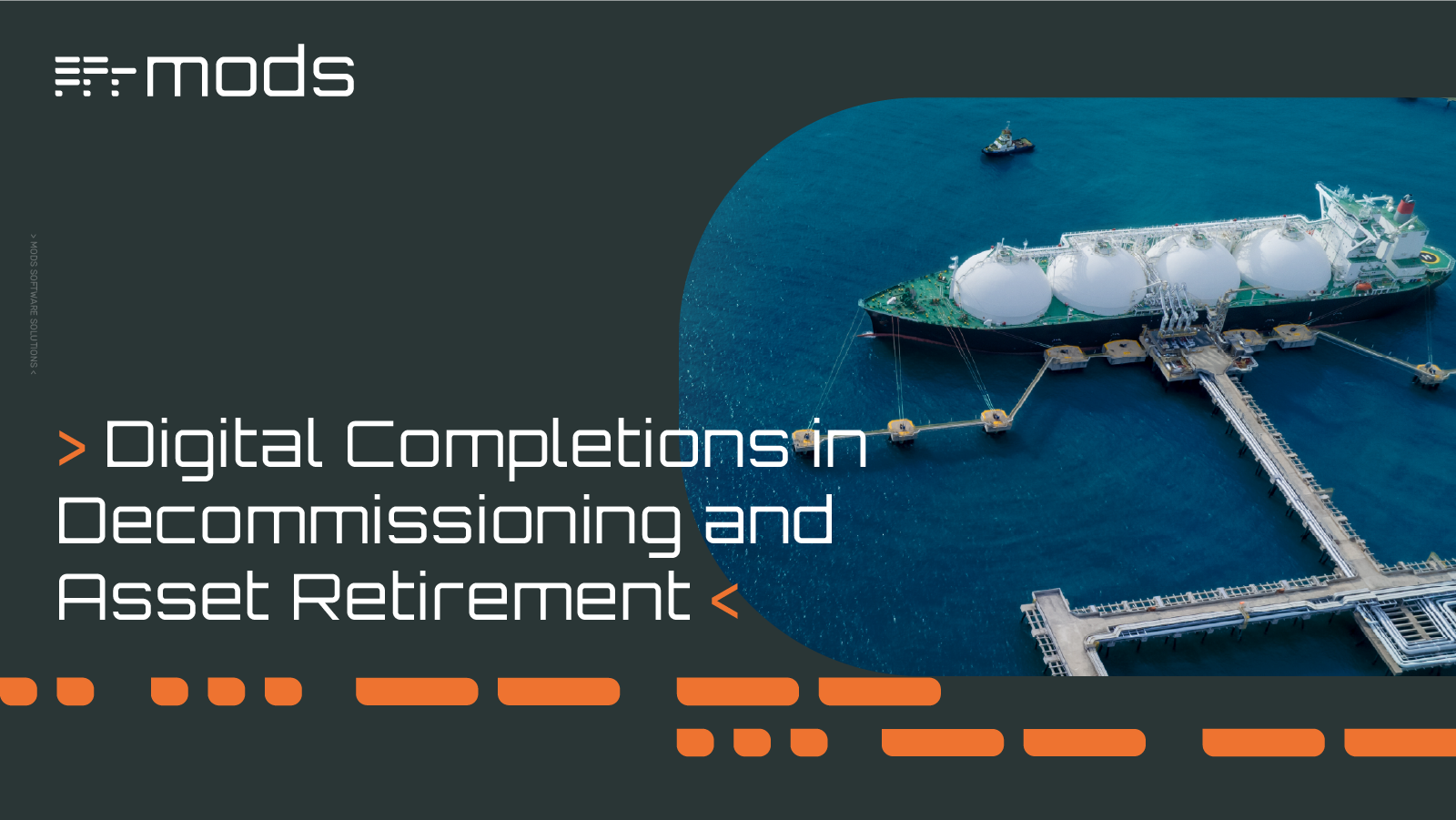
Offshore decommissioning and asset retirement present significant logistical, regulatory, safety, fiscal and reputational challenges. The process of...

Here is a checklist of items to get Advanced Work Packaging (AWP) implementation off on the right footing. It is not a complete list but covers...
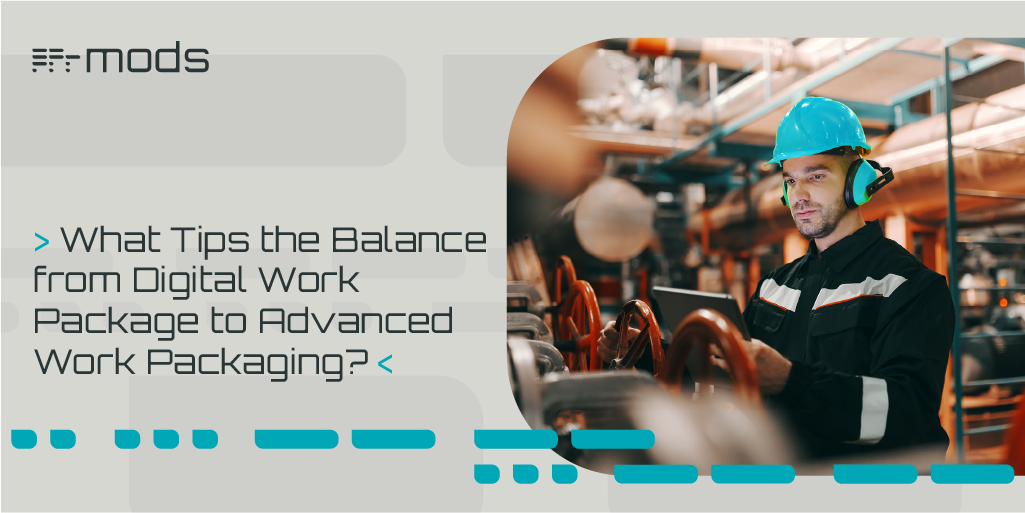
We’ve talked a lot about digital work packages (DWPs). Same goes for Advanced Work Packaging (AWP). DWPs are an efficiency-enhancing tool and AWP is...
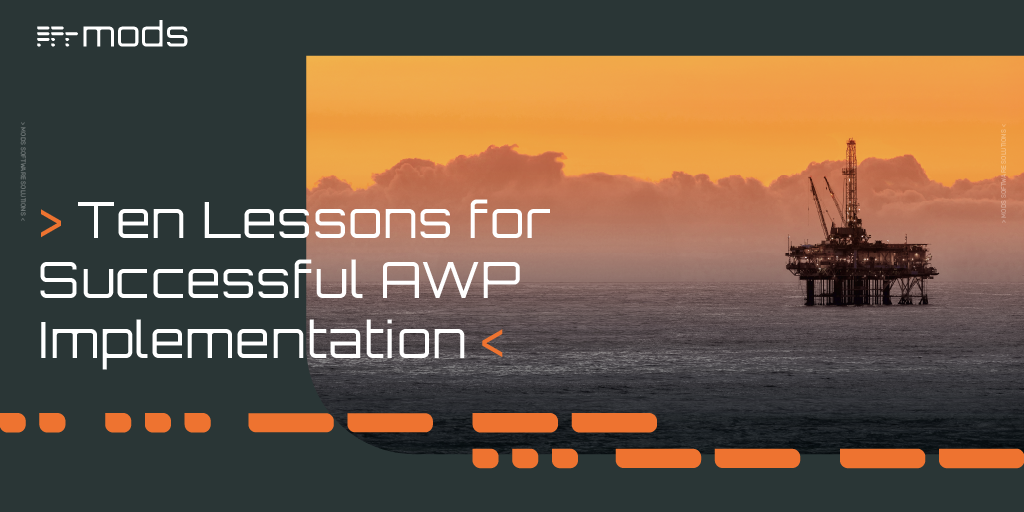
MODS develop award-winning Advanced Work Packaging (AWP) tools and work alongside global partners to deploy AWP on everything from mega-projects to